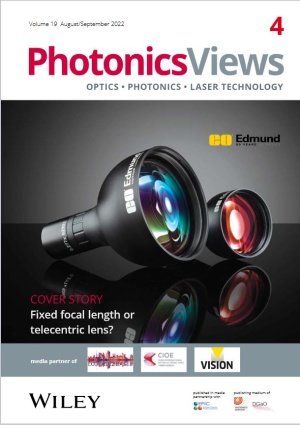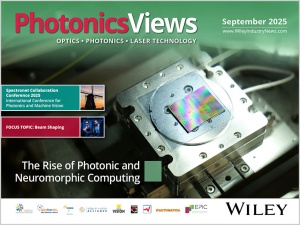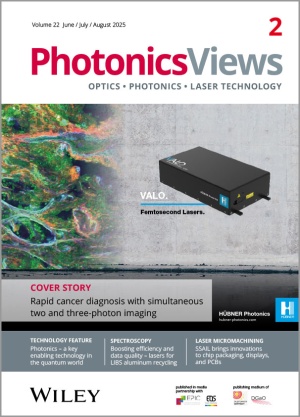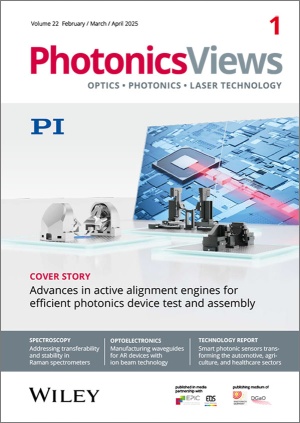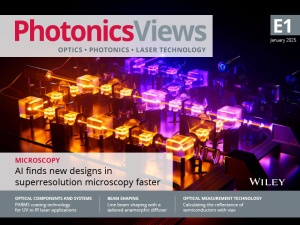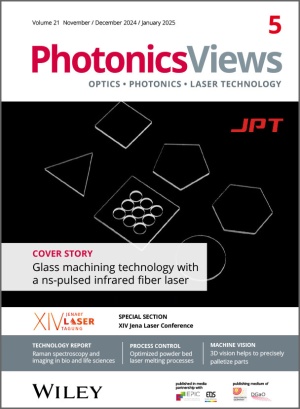Editorial
Christoph Harder (SwissPhotonics)
Interview
Francesca Moglia (formerly EPIC)
The first tenured woman physics professor at ETH Zurich, and a career-long campaigner for fair play and a level playing field for women in science, Ursula Keller, talks to Francesca Moglia, EPIC's former photonics technologies program manager.
Technology Report
Panagiotis Vergyris (EPIC)
The concept of photon counting is already a century old. However, we have only managed to harness its power over the last few decades. Generating and detecting these single quanta of light energy is essential for many applications and disruptive technologies that will solve many of today's global challenges, from super-efficient photonic quantum processors and ultrasecure communication to highly accurate sensors for biomedical imaging. Single-photon generation and detection technologies are redesigning the map of photonics applications.
Optical Communication
Ana Gonzalez (iPRONICS), Jim Theodoras (HG Genuine)
As the bandwidth requirements in communication networks continue to increase unabated, wafer level photonic integration is becoming key to miniaturizing components and increasing the number of functionalities, thereby replacing bulky systems. However, a variety of challenges such as long development times and high costs of fabrication are impeding the widescale adoption of this technology in the optical communication field.
Trends in Manufacturing
Many industries are ready to break new ground in production with lasers. To do this, users and suppliers must reconcile digitalization and sustainability, ecology and economy. As an important means to this end, lasers can be integrated into the emerging process chains so that they interact with the entire upstream and downstream processes, saving both time and money. The more than 520 participants at the AKL'22 International Laser Technology Congress in Aachen learned how the laser community is already proactively tackling these tasks.
Silicon Photonics
Alan Petrillo (Comsol)
Optical fiber networks, which make up the backbone of the internet, rely on many electrical signal processing devices. Nanoscale silicon photonic network components, such as phase shifters, could boost optical network speed, capacity, and reliability. To design these small but powerful devices, a team at the Swiss Federal Institute of Technology Lausanne uses simulation to optimize both optical and electromechanical performance.
Previews
Optical Components and Systems
Boris Lange (Edmund Optics)
How do telecentric lenses work? And how exactly do they differ from fixed focal length lenses? This article introduces the peculiarities and explains why telecentric models are predominantly used in optical metrology.
Additive Manufacturing
In the cooperative ‘Laserpore’ project, an innovative process has been developed for the first time worldwide that allows the generation of porous glass moldings which, on the one hand, have a complex and flexible geometric shape and, on the other hand, a hierarchical pore structure.
Laser Materials Processing
Evangelos Skoulas, Alexandros Mimidis, Antonis Papadopoulos, Andreas Lemonis, Emmanuel Stratakis (all: Biomimetic)
A comprehensive report is provided here on a single-step approach to the selective surface processing and functionalization of glass components with laser pulses. In particular, it is shown that biomimetic, self-organized, deep-subwave-length, quasi-periodic nanopillar structures can be realized using ultrashort laser light. These structures have an enormous effect on the properties of the glass, including optical and wetting. Remarkable antireflection and enhanced transmission, tunable glare as well as a strong antifogging effect of the laser processed glass are shown. Several use cases are discussed for selective glass surface functionalization, including optical fiber tips and curved optical lenses.
Laser Cutting
BR Technologies is enabling a transformer manufacturer to cut its insulation paper in a unique way by using lasers integrated into its machines. The SR 15i CO2 laser sources from Luxinar are cutting crepe paper, which is used as an insulation layer inside the electrical transformers that are sold to power grid suppliers.
Andreas Gaab, Tobias Roeder, Quentin Hayet, Alejandro Becker (all: Corning)
With a new enhanced nanoperforation (EnP) approach, Corning Laser Technologies can demonstrate an increase to 128 MPa B10 in edge strength (ES) for 1.8RI glass. This will help designers and manufacturers to meet the expectations of future AR applications.
Machine Vision
Technologies for ever thinner displays and vibrant display quality, outlandish shapes, and new applications open up additional market potential in consumer electronics and industrial markets. At the same time, however, they demand increasingly higher functionality and optical quality.
Complex fundamental research is necessary to realize future visions such as robotic humanoids with artificial joints and muscles. The Max Plank Institute for Intelligent Systems (MPI-IS) in Stuttgart, Germany, has dedicated itself to this research using a Phantom ultrahigh speed (UHS) camera for precise observation and versatile analysis of these complex processes.
For many industrial inspection tasks, wavelengths outside of visible light are more meaningful than the light spectrum perceivable by humans. New and powerful short-wave infrared (SWIR) and ultraviolet (UV) industrial cameras as well as polarization cameras are now available for such applications.
Index & Masthead


